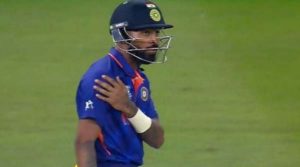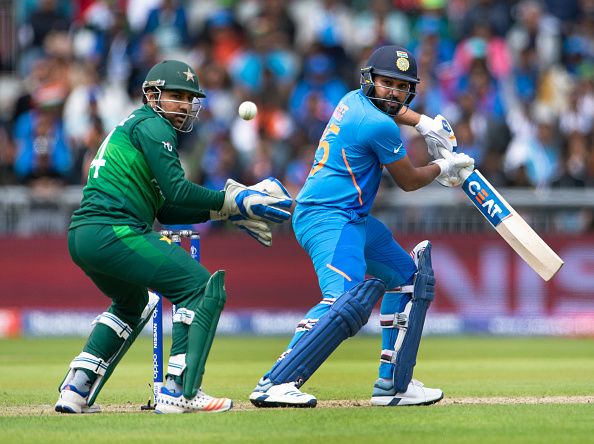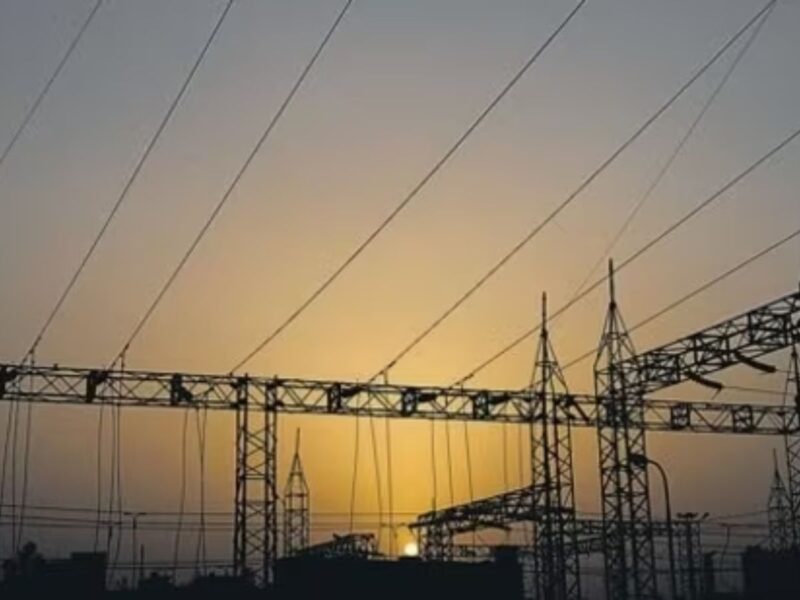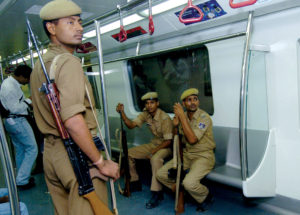Pakistan’s win against India in the T20 World Cup has put the Indian side on slippery slope, one, which can be overcome only through introspection in team selection and hard work
A win for Pakistan in the World Cup has come after a wait of 29 years. The contest, though fought for 37.5 overs, was in reality over in 13 balls. Having won the crucial toss on a day where dew was expected to play havoc with the side bowling second, the left-arm speedster from Pakistan Shaheen Shah Afridi had his plans in place.
Given the pressure that players from both sides were feeling in the run-up to this encounter, it was important for every player involved to implement the game plan to perfection. Shaheen Shah’s opening spell was important to contain India’s in-form and powerful batting line-up.
India only had one way to counter Pakistan’s threat, and that was by getting a big score on the board. That didn’t happen on Sunday as Shaheen Shah got rid of Team India’s two most dangerous openers, Rohit Sharma, and K.L. Rahul, in the first 13 deliveries of the game. Pak speed sensation first trapped Rohit right in front of the wicket on the first ball that the latter faced (4th otherwise).
There was very little that Rohit could do about the ball. But the story was a little different for Rahul, who was squared up on the first ball of his second over (3rd over of the innings) to shatter his stumps through pads to make it six for two. Both these deliveries clocked more than 140-kmph.
Team India was looking down the barrel and fortunately for them, Virat Kohli was not in the mood to give up. Batting outside his crease to negotiate Shaheen Shah’s swing, Virat did signal his intent by dispatching his delivery into the stands over long-on.
But it was left-arm spinner Imad Wasim, from the other end, who bowled inside the Powerplay and got away without being targeted by any Indian batter.
Another speedster Hasan Ali was the man to watch out for on Sunday night. He was constantly hustling, that extra pace making life difficult as he got rid of the inform Suryakumar Yadav and Ravindra Jadeja just when they were looking to settle down after the initial hard work.
Shadab Khan did the trick in the middle overs. And at a point where Rishabh Pant was looking all set to play another of his belligerent knocks, his wrong run cut short his journey to hand Pakistan a firm control of the game. He added 53 with skipper Virat to help India reach a respectable total of 151.
Haris Rauf complimented with his pace and slower ones at the back end. He frustrated comeback man Hardik Pandya with his fine mix of pace and slower ones before dispatching him back to the pavilion. India were certainly a few runs short, given the occasion, the stage and the quality of Pakistan’s bowling on the day, but that was the best India could do given the way two first 19 balls were faced by their batters.
Injured and tired
If Shaheen Shah started the war, his skipper Babar Azam was a perfect shield to counter any Indian counter-attack. From the bouncy strips of Australia to the moist surfaces of England, Team India had outsmarted their opponents with the help of a well-oiled bowling unit last year. And, the failure of the batsmen to produce a big total was a perfect occasion for the Indian speed unit to come up with yet another clinical display of fast bowling.
But for some reason, skipper Virat or for that matter chief coach Ravi Shastri picked two injured and out-of-form bowlers — Hardik Pandya and Bhuvneshwar Kumar — for such a crucial encounter. Bhuvneshwar failed to match the kind of movement one saw earlier by Shaheen Shah in his reply with the white ball.
Bhuvi, in fact, looked like a pale shadow of his prime. His fitness was certainly not in question, as he was fit for most of this ongoing season after being dropped from the England tour earlier, but his match fitness was in doubt. And that’s why Indian selectors roped in Shardul Thakur at the last moment. Shardul was anyway sitting in the dugout and watched his senior partner struggle to bowl the right line and length.
By the time Virat turned to Bumrah for a breakthrough, the two Pak openers had settled into a good rhythm. If skipper Babar’s footwork was just textbook, then his other partner Mohammad Rizwan was showing great maturity to give him patient company out there in the middle.
Beaten in all departments
Cricket is played on six major factors: form, fitness, strategy, mind games, backroom planning, and implementation.
No one can deny that the Pakistan side was better in each of them. This even though Pakistan’s preparations had been badly hit by teams cancelling their tours, first by New Zealand and then England citing security concerns. This was the same team whose cricket board (Pakistan Cricket Board) president Ramiz Raja was blaming the International Cricket Council (ICC) and India’s cricket board (BCCI) for abandoning his national team instead of helping them out.
On Sunday, Raja couldn’t thank Team India enough for leaving out the world’s top spinner Ravichandran Ashwin for the sake of keeping two unfit players (the other one is Hardik) in the squad.

It’s a question begging to be asked from the senior selection panel led by Chetan Sharma that on whose recommendation did they pick Hardik if he was not 100% sure of bowling his full quota of overs. Especially when Hardik was seen telling the official broadcaster anchor just before the start that “now he is being cleared by the medical team to bowl”.
As usual, no answers are expected from anyone in the BCCI. But the questions aren’t going to stop. “Why was Hardik picked in the final squad despite not bowling in the recently concluded IPL?”
“Why was Ashwin picked ahead of Yuzvendra Chahal, knowing well that Virat has always preferred playing Ravindra Jadeja ahead of him in the recent past because of his batting and fielding prowess?”
Anyway, once Bhuvi looked ineffective and Mohammad Shami and Jasprit Bumrah failed to produce any magic ball, there was no way for Virat to stop the Pakistani openers, skipper Babar Azam and Mohammad Rizwan, to score just above 7.5 runs per over. Hardik injured his troubled shoulder during the game once again and was taken for the scans.
The winning runs came with 13 balls still left to bowl. The only good news from the Indian camp is that Hardik’s injury is not serious and can play in the remaining games if at all picked by the Indian think-tank.
Tough road ahead for India
With Pakistan beating the group’s other top team New Zealand by five wickets on Monday, one thing is for sure that only one more team can progress from this Group B.
From being called the easiest group as compared to Group A — consists of England, Australia, South Africa, West Indies, Sri Lanka and Bangladesh — India now finds itself in a position where next Sunday’s game against Kiwis could well be the decider for both.
Having Afghanistan, Namibia and Scotland as three other teams in the Group, a loss against Pakistan has put India in a vulnerable situation. Only two teams from each group will progress in the tournament.
(Cover: Rohit Sharma of India batting with Sarfaraz Ahmed keeping wicket during the Group Stage match of the ICC Cricket World Cup 2019 between Pakistan and India Representational image: Getty Images)





